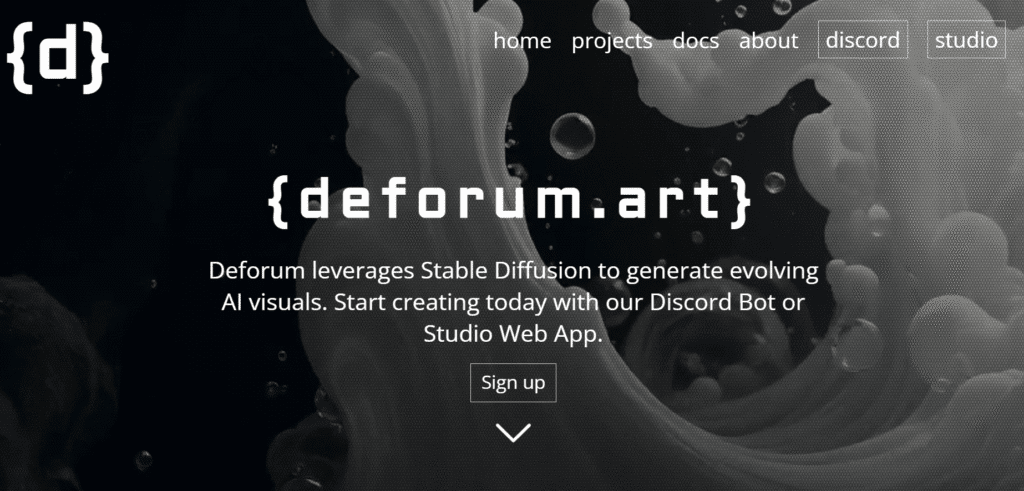If you are into AI art, you’ve probably heard of Deforum Stable Diffusion. It’s a twist on the well-known Stable Diffusion model, built to handle animations, camera moves, 2D/3D motion, prompt transitions and more. In this article I’ll walk you through how it works, what you get, pricing, plus pros & cons no fluff, just the good stuff.
What Deforum Stable Diffusion does
Deforum enables you to generate animations rather than just still images. You can:
- Use keyframe animations: define camera movement, zooms, rotations across frames.
- Let prompts shift over time: the prompt or seed can change so your animation evolves.
- Work in 2D or pseudo-3D mode: giving depth, motion, and interesting transitions.
- Integrate audio, sync motion to music, or import a video and apply the model.
- Run locally (if you have GPU) or via Colab/online if you prefer cloud setup.
So basically, if you like the idea of text-to-image but want moving visuals (videos, loops, animated renderings) then Deforum gives you that extra dimension.
Key features & functionality
Here are some specific features worth noting:
- Camera motion control: you can set axes, zoom, pan, rotate not just static view. This gives a cinematic feel.
- Seed & frame control: you can manage randomness, specify how frames evolve or stay consistent.
- Prompt evolution / morphing: the prompt or its weighting can change across frames so you “morph” visuals.
- Support for video input / transformations: you can import a clip or image and apply the model for effects.
- Custom models and aesthetic control: you’re not locked into a base model; you can mix/customise for unique styles.
- Community open-source roots: it’s built on the open-source ecosystem, so you can tweak or fork.
Really cool for creators who want more than just static AI images video, motion graphics, experimental visuals.
Pricing & access
There’s a free-to-use angle, and then paid support for more resources. According to one breakdown: you can use Deforum with no cost but you won’t have guaranteed resource availability.
For a paid subscription you’ll find approx €10/month gives access to better GPU resources and computational units.
In short: you could start free, experiment, then upgrade if you want reliable rendering hours and premium resources.
Pricing chart (monthly)
- Free tier: no monthly fee, but limited/unreliable compute.
- Paid tier: about €10/month for guaranteed units and better GPU access.
- (No higher tier publicly detailed in the source.)
Monthly visitors & social footprint
- The main GitHub account for the “deforum” community has 507 followers (as of record) on GitHub.
- I couldn’t locate a reliable figure for monthly website visitors to Deforum Stable Diffusion.
- Social media overall: publicly cited number is limited (GitHub followers above).
So take that as an indicator: it’s niche but active, creative-community oriented.
Pros & Cons
Pros:
- Lets you go beyond still images: full animation, camera moves, 3D-style depth.
- Highly creative, flexible workflow for motion graphics, experimental visuals.
- Built on open-source foundations: you can explore, tweak, customise.
- Affordable paid tier makes it accessible for creators and hobbyists.
Cons:
- Steep learning curve: controlling keyframes, camera axes, prompt evolution takes effort.
- Free tier resources are unreliable; to get serious render times you’ll need the paid tier.
- The official repository states the project “is no longer actively maintained or updated”.
- Requires decent GPU hardware or cloud access if you want smooth animations (higher frames, resolution).
Who it’s for
This tool is great if you’re an AI artist, motion graphics designer, indie filmmaker, content creator who wants to experiment with text-to-animation workflows. If you just want quick static images, this might be overkill. But if you love playing with loops, camera motion, evolving prompts and future-looking visuals — it fits.
Final thoughts
Deforum Stable Diffusion offers something special: pushing the stable-diffusion world into animation territory. It’s not for complete beginners who just want a click-and-go app. But if you’re willing to dive in, play with prompts, camera moves and frames, you can make some seriously eye-catching visuals. Remember the maintenance note: the official repo says the project is no longer actively updated, so you might run into limitations or need community forks.






